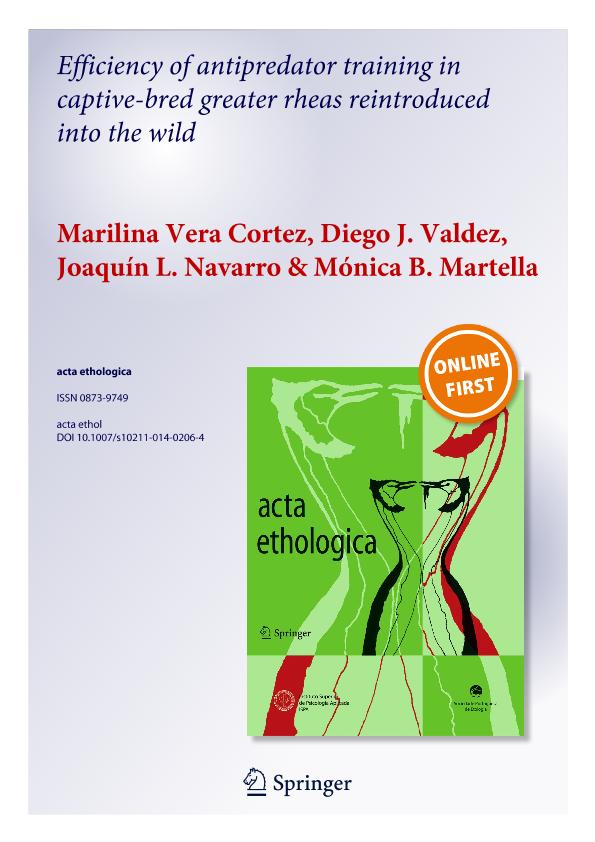Artículo
Efficiency of antipredator training in captive-bred greater rheas reintroduced into the wild
Fecha de publicación:
03/2015
Editorial:
Springer Heidelberg
Revista:
Acta Ethologica
ISSN:
0873-9749
Idioma:
Inglés
Tipo de recurso:
Artículo publicado
Clasificación temática:
Resumen
High post-release mortality of captive greater rheas reintroduced into the wild might be mitigated with antipredator training that helps released individuals recognize their predators. We analyzed whether captive-bred greater rheas conserve antipredator behavior, and evaluated the efficiency of antipredator training by recording survival after reintroduction into the wild. Training involved 12 individuals and consisted of a stimulus representing the natural predator (taxidermized puma) paired to an aversive stimulus (simulated capture). The control stimulus consisted of an innocuous object (chair) that was not paired to the aversive stimulus. Thirty and 60 days after the last training session, we presented the trained and control individuals (nine untrained individuals) to the predator stimulus, which was not paired to the aversive one. All of the greater rheas showed vigilant and running behaviors in the presence of the predator model. Trained individuals did not discriminate between a predator and a non-predator stimulus but they recognized the predator up to 2 months later. Survival was nil 8 months after release. However, only one individual was killed by a puma, whereas the remaining individuals died due to dog attack and poaching. Training did not increase survival of reintroduced greater rheas because of the failure to consider other potential predators, such as dogs or humans. Therefore, captive breeding might have affected greater rheas? behavior by preventing them from recognizing man as a predator.
Archivos asociados
Licencia
Identificadores
Colecciones
Articulos(IDEA)
Articulos de INSTITUTO DE DIVERSIDAD Y ECOLOGIA ANIMAL
Articulos de INSTITUTO DE DIVERSIDAD Y ECOLOGIA ANIMAL
Citación
Vera Cortez, Marilina; Valdez, Diego Javier; Navarro, Joaquin Luis; Martella, Monica Beatriz; Efficiency of antipredator training in captive-bred greater rheas reintroduced into the wild; Springer Heidelberg; Acta Ethologica; 18; 2; 3-2015; 187-195
Compartir
Altmétricas




